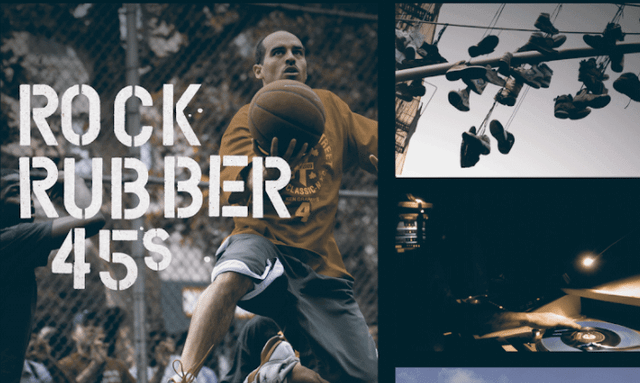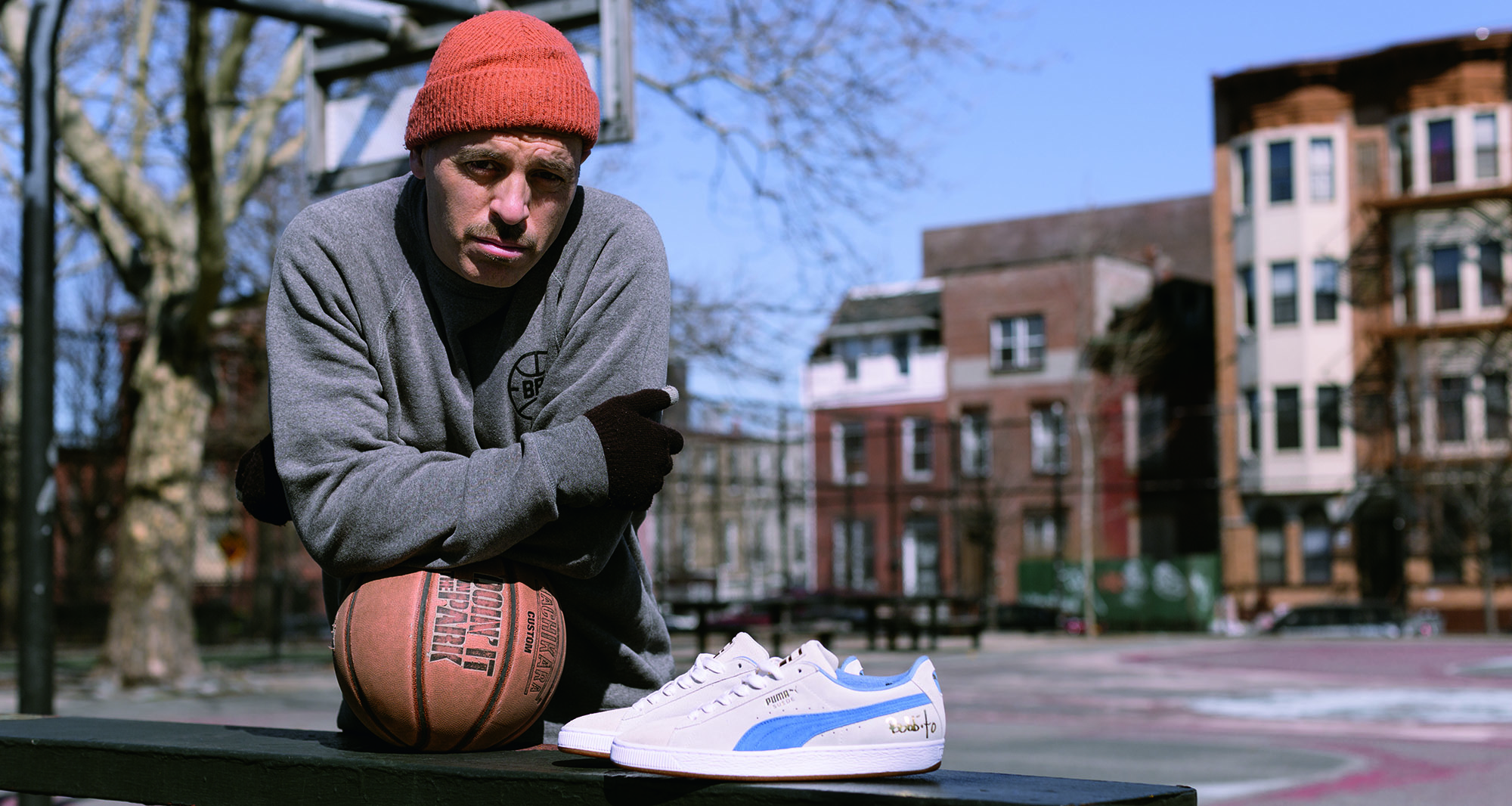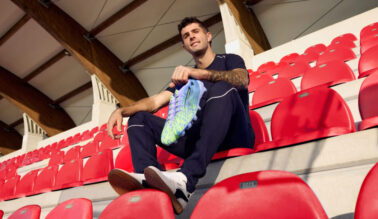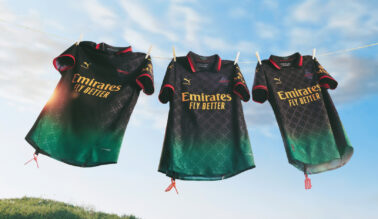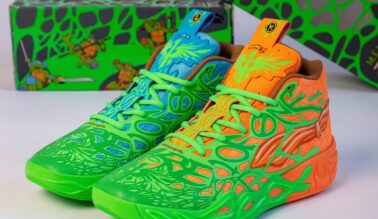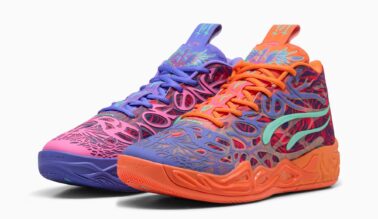This post may contain affiliate links. Please read our disclosure policy.
Catching up with Bobbito Garcia is something I look forward to every time the opportunity presents itself.
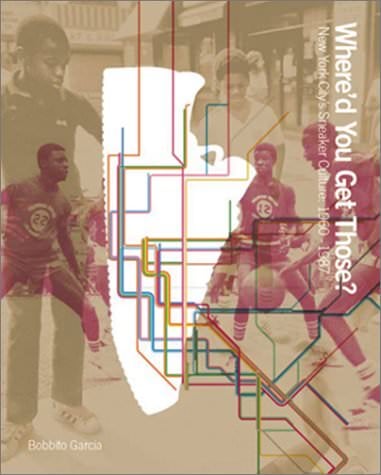
My first encounter with Bobbito came through his book Where’d You Get Those? New York City’s Sneaker Culture: 1960-1987 when I happened upon a copy that was on a coffee table at a women’s clothing store in Dallas, TX – somehow I convinced them to sell me the book. While I had been working in footwear for more than three years when I got the book, I had not yet started writing about shoes or their history beyond contributions to forums and message boards.
Bobbito’s book spoke to me in a way that other pieces had not. Initially thinking from the cover I was going to know every single detailed piece of information about shoes, I learned that the cliche about books and covers was very accurate. Yes, I did learn more than I ever had about shoes from that era thanks to Where’d You Get Those?, but more importantly I learned about New York City sneaker culture and the people that made sneakers what they are today decades later.
Admittedly out of fear of coming across as a fanboy, I’ve never told Bobbito directly that this book was a substantial source of inspiration for me to start writing about shoes – not to mention building a site around telling the stories of sneakers. Fate would have it that the very first interview ever published on Nice Kicks was with Bobbito in 2007 when we unveiled his trio of Kool Bob Love Air Force 1 Lows that were the featured collaborative project for the 25th Anniversary of the Nike Air Force 1.
Eleven years after my first interview with Kool Bob Love, I found myself in Brooklyn catching up with the legend who has given so much to the people over the years to talk about his new project with PUMA as well as some good old talk about basketball, sneakers, and hip hop – the three pillars of his new film Rock Rubber 45s coming out in June.
Matt Halfhill: You’ve had many shoes over the years and worked with many brands too, but what was your first encounter with PUMA?
Bobbito Garcia: My first encounter with PUMA was through my cousin Stevie. He was a badass – used to write with the name BOM. Local writer – not bombing trains or anything like that.
He had the PUMA Suedes and that was how I first saw them in person. He had the PUMA Clydes later too. When he got them, this was during the Delancey Street Era where guys could get robbed coming from uptown to cop a pair of sneakers. That was the M-O for the LES – now called East Village. There were hard rock cats from Uptown who feared to come to the LES.
Copping a pair of PUMAs, on some levels, had this unwritten code of toughness because there was danger in copping them.
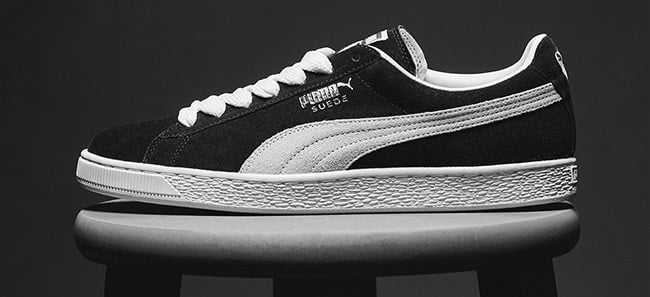
Matt: A danger beyond going to the LES?
Bobbito: There was danger in challenging the status quo of wearing something different from Stepsies, which I wrote about in Where’d You Get Those?. It was cultural for someone on the block with a new pair of shoes to get their shit stomped by cats because “they’re too clean.” If you had a pair of PUMAs and had to go through what you went through in the LES just to get them, you’re not really trying to get stomped out. But, it was almost a certainty you were going to get stomped out with PUMAs because of the status they had.
One of the reasons I got into wearing things that no one else had or heard of was that it was almost like a “safe zone.” Not only that, it could help me think of being a better ball player and being more original.
PUMAs were the hot shit. People were either wanting to rob you for them or test you for them. PUMA was a statement shoe in the ’70s. If you were wearing them, you were making a statement. Those are my earliest, earliest memories of PUMA. It’s funny, I forgot about that.
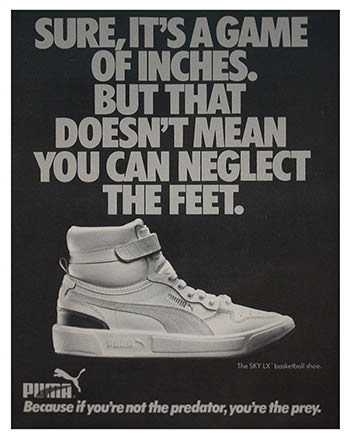
Matt: What PUMAs were you wearing then?
Bobbito: I didn’t really wear the PUMA Suede at all in the ’70s. Because it was so popular that even then I was really trying to stay off of wearing what so many other folks had, but that didn’t mean I didn’t think the shoes were great.
I really jumped onto PUMA hard when the SKY came out. The Sky II with the two straps on the high top. Riverside Church was the best team in the city and the players on the team got those pairs to play. The PUMA Sky II also had a good midsole that was great for ball and also was solid to have when playing outdoors.
But then, the PUMA Sky LX came out and that was the shutdown shoe, especially if you were seen in Harlem or the Bronx wearing the Sky LX. The savvy sneakerhead would look at you and give you the nod that you knew what was up. That was the divider shoe.
My arrival at the Puma Suede and Puma Clyde was a long road that circumvented the original run. I sort of avoided it when it first dropped because it was so popular but then came back around to it after. I wore these peripheral shoes in the line because I really liked the brand and thought PUMA was cool but also wanted to be unique and different.
Matt: So then getting to create your own Suedes and Clydes must be really cool.
Bobbito: Are you kidding me?! I can’t believe that they’re giving me the template to go to work and let me put my stamp on it.
[Bobbito pauses. I can see him looking up thinking about something. Every 5 or 10 seconds his unforgettable smile appears.]
It’s crazy – just all of it. When you asked me about sneakers, my mind went back in time.
Matt: Where to?
Bobbito: First stop was 1977. I’m looking around and seeing New York City the way it was back then. The street corners, the basketball courts, fences, trains – all of it. I was thinking of what Delancey Street looked like during those days and walking around Uptown. Just bringing up some sneakers can take one back – amazing.
Matt: Pretty wild what can unlock memories.
Bobbito: Absolutely. And there are so many things that can take you back. On the show I do with Stretch, we do this segment where we play a track for our guest and see how it makes them feel or what they think. It’s incredible. For a musichead, it usually will bring them back to when and where they first heard the track, what they were doing when the song came on. For others, they will hear the song and it might unlock a memory with a friend or close to them that they associated with the tune.
We all have those touchpoints to our memories and it’s crazy how they can be unlocked with no notice and out of nowhere. For some, it’s a scent. For some, it’s a taste. For some, it’s a sound. I mean, just now I’m playing all of this back in my head because we were talking about shoes.
Matt: What was the music you were hearing back then?
Bobbito: If we’re talking about the mid-late ’70s, walking around the Frederick Douglass projects, I’m hearing “Apache” by the Incredible Bongo Band. You know what was cool back then was if people had a radio they would often turn it up, put it in the window and point the speakers out of their apartment so that people in the streets could hear it too. It was a nice communal thing that was really cool of sharing your mood and your music with others outside to enjoy.
Matt: With a quick glance at the shoes, one might think the Knicks colors were a source of inspiration, but I figure there’s a deeper story with these.
Bobbito: It’s funny, I never thought of the Knicks when doing these. Not even remotely.
The inspiration for the design was to draw the sneaker better. Unless you read my book or are of the age, you have no way to think of that shoe as a basketball shoe. I wanted to provide that context. To me, when someone looks at a shoe and says, “Oh, that’s a basketball shoe,” that immediately makes it a cooler shoe because basketball is cool! It’s a cool ass sport! I wanted to give the context that the Suede is a basketball shoe. Yes, it has been much more to many, but the root of it is the cool sport of basketball.
Matt: This is far from your first collab, but was this a design you had in mind for a while? I remember from your book you talked about you had been customizing since your early days as a head.
Bobbito: Not the first project, but I always enjoy doing them. I had the K1X Chiefglider in 2004, Adidas Superstar in 2005 that was part of the 35th Anniversary, a handful of Nike Air Force 1s in 2007, Pro-Keds Royal Flash, Puma Clyde, but this process was completely different this time around.
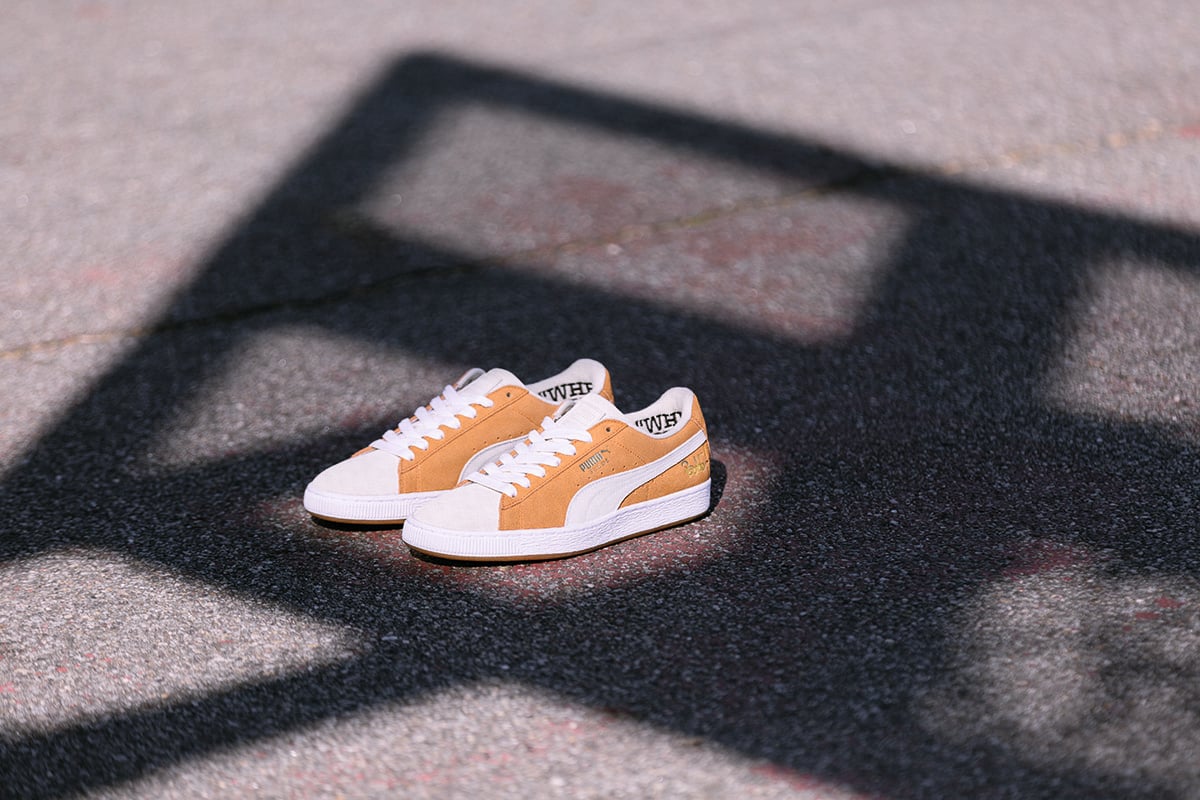
Matt: How so?
Bobbito: This project was so well organized. For starters, I had the PDF of the shoe, but along with it, I had a packet of different materials, colors, laces, and so on. Usually, it was “come up with some ideas and we’ll see if we can make it happen.” PUMA made it way more organized and what I put together was much closer to the first samples than prior projects.
I got a brief peek at what some of the other Suede 50 projects looked like and I wanted to make sure mine was done really true to me and my NY roots. We are not doing 15 colors or 13 fabrics. We’re not doing some 5th Ave or crazy fashion, no rock and roll or skateboard vibes, but we’re doing basketball. Some authentic basketball NY shit.
I referenced some super OG shoes and the whisper white on the toe for the Suede and they were able to make it happen. Also, there are some ill details such as a terry lining that has been embroidered. PUMA was able to execute that and the details came out really, really nice.
The details matter.
Matt: I heard you have another film project coming and that sneakers play a part in it. What can you tell me about that?
Bobbito: My next film is coming next month – Rock Rubber 45s.
Rock is for basketball, Rubber is for sneakers, 45s is for music. There are a string of premieres coming up in Italy, Puerto Rico, US, and Canada – all in June. Stay tuned!
